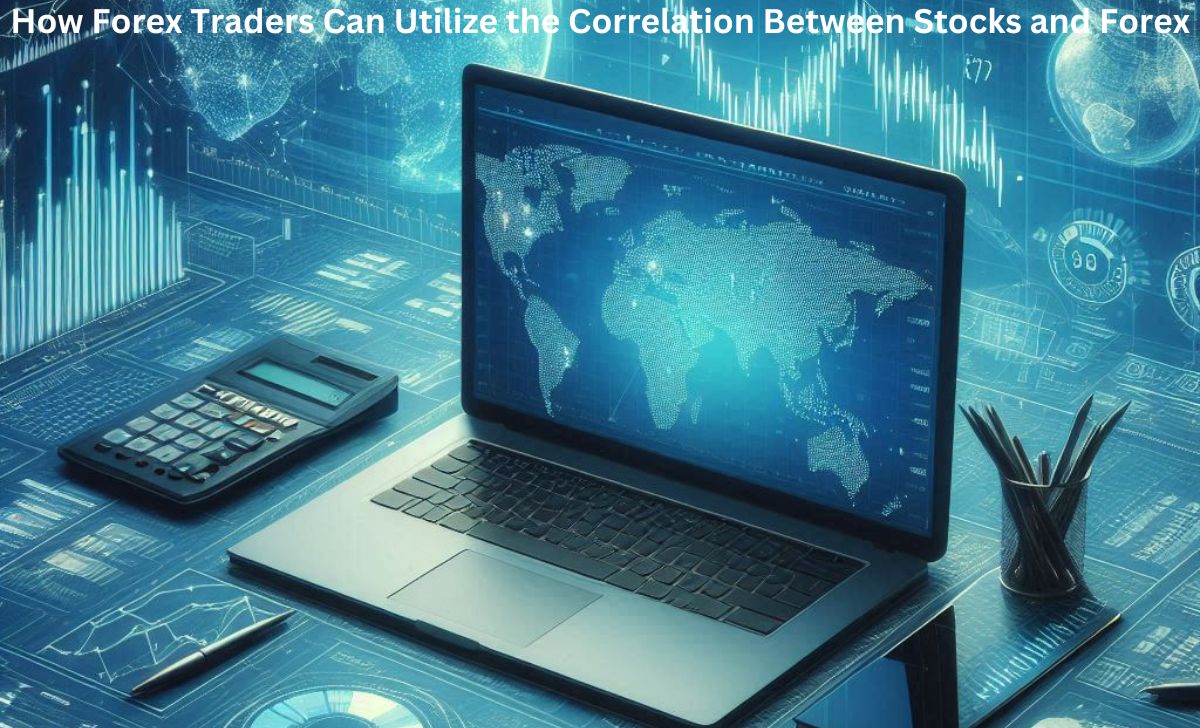The correlation between stocks and forex is an important topic that forex traders need to understand. In this article, we will explore the Correlation Between Major Stock Indices and Currency Pairs.
Understanding the Correlation Between Major Stock Indices and Currency Pairs
The correlation between stocks and forex (foreign exchange) markets is a vital concept for traders and investors seeking to navigate global financial markets. Understanding how stock indices and currency pairs interact can significantly impact trading strategies and help traders predict market movements.
When we talk about correlation between stocks and forex, we refer to how price movements in major stock indices influence the value of corresponding currency pairs. This article will explore the correlation between major stock indices and currency pairs, the factors driving this relationship, and how traders can use this knowledge to their advantage with Forex89.com.
What is Correlation Between Stocks and Forex?

Correlation refers to the statistical relationship between two or more financial instruments. In the context of forex and stocks, it describes the tendency of currency pairs and stock indices to move in the same direction (positive correlation) or opposite directions (negative correlation) over time.
- Positive Correlation: This occurs when an asset’s price moves in the same direction as another asset. For instance, if a stock index rises, the value of a currency pair might also increase.
- Negative Correlation: This occurs when one asset’s price moves in the opposite direction of another. For example, when the value of a stock index falls, the value of a currency pair might rise.
Understanding these correlations can help traders predict how a particular currency pair might react to movements in stock indices and vice versa.
Next, we discuss why understanding this correlation is crucial for traders and investors, highlighting its impact on market sentiment, risk management, and trading strategies.
Why is the Correlation Between Stocks and Forex Important?

The correlation between stocks and forex has become increasingly important due to the high level of interconnection between global financial markets. In today’s interconnected world, economic events, geopolitical developments, and market sentiment in one asset class can have a significant impact on other asset classes. By understanding how stock movements affect currency prices, forex traders can make more informed decisions about when to enter or exit trades.
Here are some key reasons why understanding the correlation between stock indices and currency pairs is crucial for forex traders on platforms like Exness, HFM, FBS, and XM:
- Market Sentiment: Stock markets and forex markets often react to the same economic data or geopolitical events. For example, a positive earnings report from a major company or a central bank interest rate decision can lead to rallies in both the stock market and certain currencies. By understanding these correlations, forex traders can gauge market sentiment more effectively.
- Diversification: By understanding correlations, traders can diversify their portfolios to reduce risk. For example, if a trader holds both stocks and forex positions, understanding the correlation between the two can help in managing the risk of their overall portfolio.
- Hedging Opportunities: Traders can use the correlation between stocks and forex to hedge their positions. If a trader has an exposure to a stock index that is highly correlated with a particular currency pair, they may use forex trades to hedge against potential losses in the stock market.
Next, we explore the key factors that drive the correlation between stocks and forex, including economic data, interest rates, and geopolitical events.
Factors Driving the Correlation Between Stocks and Forex

Several key factors drive the correlation between stocks and forex. These factors include:
Economic Indicators and Data Releases
Economic data releases, such as GDP growth rates, inflation figures, employment reports, and retail sales, have a significant impact on both stock indices and currency pairs. Positive economic data can lead to higher stock prices as investors anticipate higher corporate profits, while the same data can lead to a stronger currency as traders expect central banks to raise interest rates.
Conversely, negative economic data can cause stock prices to fall while simultaneously weakening the currency as traders anticipate lower interest rates or monetary stimulus.
Interest Rates and Monetary Policy
Interest rates set by central banks play a crucial role in both the stock and forex markets. When central banks raise interest rates, it generally leads to higher yields on government bonds, attracting foreign investment, which strengthens the domestic currency. At the same time, higher interest rates can make stocks more expensive, leading to a potential drop in stock prices. Conversely, when interest rates are lowered, it can weaken the currency while potentially boosting stock prices.
Geopolitical Events and Risk Sentiment
Geopolitical events, such as trade wars, political instability, and international conflicts, can create risk sentiment in both the stock and forex markets. Risk sentiment refers to the overall mood of investors regarding market uncertainty. In times of geopolitical uncertainty, investors often seek safer assets, such as the US Dollar or Japanese Yen, causing currency pairs with these safe-haven currencies to strengthen. Simultaneously, stock indices in emerging markets or riskier assets tend to fall.
Commodity Prices and Their Impact on Currencies
The performance of commodities, particularly oil and gold, can also influence the correlation between stocks and forex. For example, countries that are major oil exporters, such as Canada and Russia, often see their currencies (such as CAD and RUB) appreciate when oil prices rise. Conversely, when oil prices decline, the currencies of oil-exporting countries may weaken, leading to a negative correlation with their respective stock indices.
Similarly, the performance of gold prices often has an inverse relationship with the US Dollar. When gold prices rise, the US Dollar tends to weaken, and stock indices may also rise due to the perception of economic stability.
In the next section, we analyze specific correlations between major stock indices and currency pairs, illustrating how different markets react to global financial trends.
Key Correlations Between Stock Indices and Currency Pairs

Different currency pairs tend to have varying levels of correlation with major stock indices. Below are some key examples:
EUR/USD and the S&P 500 Index
The EUR/USD currency pair is often influenced by the performance of the S&P 500 Index, which is considered a benchmark for the US stock market. When the S&P 500 rises, indicating strong performance in the US economy, the US Dollar tends to appreciate, resulting in a potential decline in the EUR/USD exchange rate. Conversely, a decline in the S&P 500 can lead to a weaker US Dollar and a potential rise in EUR/USD.
USD/JPY and the Nikkei 225 Index
The USD/JPY currency pair is highly correlated with the Nikkei 225 Index, which represents Japan’s stock market. The Japanese Yen is considered a safe-haven currency, meaning that when global stock markets decline, investors often flock to the Yen, causing the USD/JPY pair to fall. Conversely, when the Nikkei 225 rises, indicating a strong Japanese economy, the Yen may weaken against the US Dollar, leading to a rise in USD/JPY.
GBP/USD and the FTSE 100 Index
The GBP/USD currency pair often has a positive correlation with the FTSE 100 Index, which tracks the performance of the largest companies in the UK. A strong performance in the UK stock market tends to be positive for the British Pound, as it signals economic growth and investor confidence. As a result, the GBP/USD pair may rise during times of strong stock market performance in the UK, while it may weaken during market declines.
AUD/USD and Commodity Prices
The Australian Dollar (AUD) is often considered a commodity currency, as Australia is a major exporter of raw materials, including metals, minerals, and agricultural products. The AUD/USD currency pair is closely correlated with commodity prices, particularly the price of metals like gold and copper. When commodity prices rise, the Australian economy benefits, leading to a stronger AUD. Conversely, when commodity prices fall, the Australian economy can face challenges, and the AUD may weaken.
Finally, we provide insights on how forex traders can leverage these correlations to enhance their trading strategies, manage risk, and identify profitable opportunities.
How Forex Traders Can Utilize the Correlation Between Stocks and Forex

Understanding the correlation between stock indices and forex markets is essential for developing effective trading strategies. Below are some ways forex traders can capitalize on this correlation:
Divergence and Convergence Strategies
Traders can use divergence and convergence strategies to identify potential market opportunities. For example, if stock indices are rising, but the currency of the corresponding country is weakening, this may indicate a potential divergence between the two markets. Traders can take advantage of this by entering positions that anticipate the eventual convergence between the two.
Trading on Economic Data Releases
Forex traders can use the release of economic data, such as GDP figures, employment reports, or inflation data, to assess potential movements in both stock indices and currency pairs. By analyzing how the stock market reacts to this data, traders can make informed predictions about how the corresponding currency pairs will react.
Hedging Currency and Stock Exposure
Traders who have exposure to both the stock and forex markets can use correlation strategies to hedge their positions. For example, if a trader holds a long position in a stock index that is positively correlated with a currency pair, they may hedge their risk by trading the currency pair in the opposite direction.
The correlation between major stock indices and currency pairs is a powerful tool for traders and investors looking to navigate the complexities of global financial markets. By understanding the factors that drive these correlations, forex traders can make more informed decisions, manage risk more effectively, and capitalize on market opportunities. Whether you’re trading major currency pairs like EUR/USD or USD/JPY or exploring commodity-linked currencies like the AUD, understanding the interplay between stocks and forex is crucial for success in today’s dynamic markets. As always, traders should continue to monitor key economic indicators, geopolitical events, and market sentiment to stay ahead of market movements and refine their trading strategies accordingly.

Adam Mass is the CEO of Forex89.com and a leading financial expert specializing in Forex trading and investment strategies. With extensive experience in global markets, he has built a reputation for providing in-depth market analysis and innovative trading solutions. Under his leadership, Forex89.com has become a trusted platform for traders seeking insights, education, and cutting-edge financial tools. Email: [email protected]













